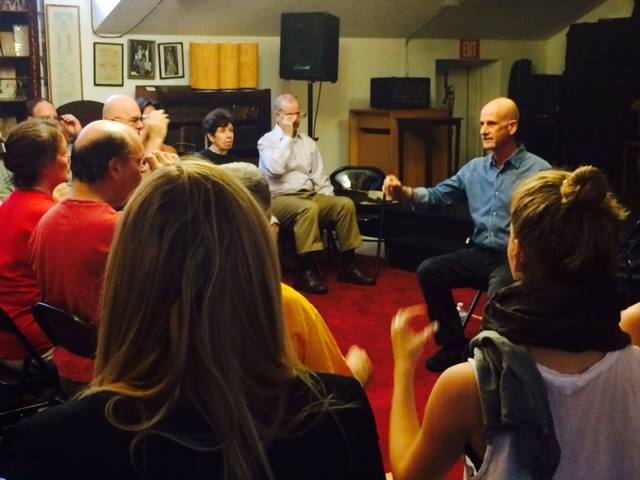
The following questions and answers regarding the Alexander Technique appeared in the New York Times online June 1, 2009, 11:55 am
The Alexander Technique for Back Pain
A recent study in the British Medical Journal BMJ found that the Alexander Technique, a noninvasive method of adjusting body postures to relieve stresses, may aid in the treatment of back pain. New York Times reader Karen G. Krueger of New York City had some questions about that research. We contacted Paul Little, professor of primary care research at the U.K.’s University of Southampton and lead author of the BMJ study.
Question:
I have found that very few medical professionals in this country know about the Alexander Technique; I myself found it through a friend in the arts — the technique is widely taught in music conservatories and drama schools as a means of enhancing performance and avoiding injury. What can you tell readers about the Alexander Technique and how it works?
Answer:
The Alexander Technique involves a teacher using both gentle hand contact and verbal instruction to help patients learn to become aware of and avoid harmful habits of muscle use which may cause and maintain pain. The Alexander Technique is not a form of back exercise -– rather it is applied in everyday tasks like standing, walking, sitting at a desk or playing a musical instrument. We hypothesize that the Alexander Technique works through release of tension, decompression of the spine, more balanced muscle activity and improved flexibility.
Question:
In what circumstances should a back pain patient pursue the Alexander Technique (with or without an exercise program) as opposed to other, more invasive approaches, such as medication or surgery?
Answer:
I would recommend any patient try the technique before more invasive interventions; that is, patients with chronic or recurrent functional back pain where there are no clear “red flags,” such as progressive or multilevel neurological symptoms, steroid use or a recent history of trauma.
Question:
Have your studies demonstrating the effectiveness and cost-effectiveness of the Alexander Technique to treat back pain increased the profile and availability of the technique to patients in Britain?
Answer:
I think the profile has improved but not hugely — the medical establishment is inevitably slow and cautious about recommending new interventions when they perceive them to be novel.
Question:
The medical research establishment in the United States has begun to study various alternative health practices to address back pain and other chronic conditions for which traditional medical approaches have had limited success. What can you say about other “alternative” therapies for back pain?
Answer:
There is encouraging evidence in the short term for massage and yoga and also some evidence for acupuncture, and for chiropractic when combined with exercise regimens. In terms of “alternative therapies” for back pain, try and use something that is based in good research evidence.
The Alexander Technique has been around for many years. New York Times Personal Health columnist Jane E. Brody wrote about the technique back in 1990. To learn more about the latest research on the Alexander Technique and see a video of the practice, visit the BMJ site.
Mark Josefsberg -Alexander Technique NYC
(917) 709-4648










Leave A Comment